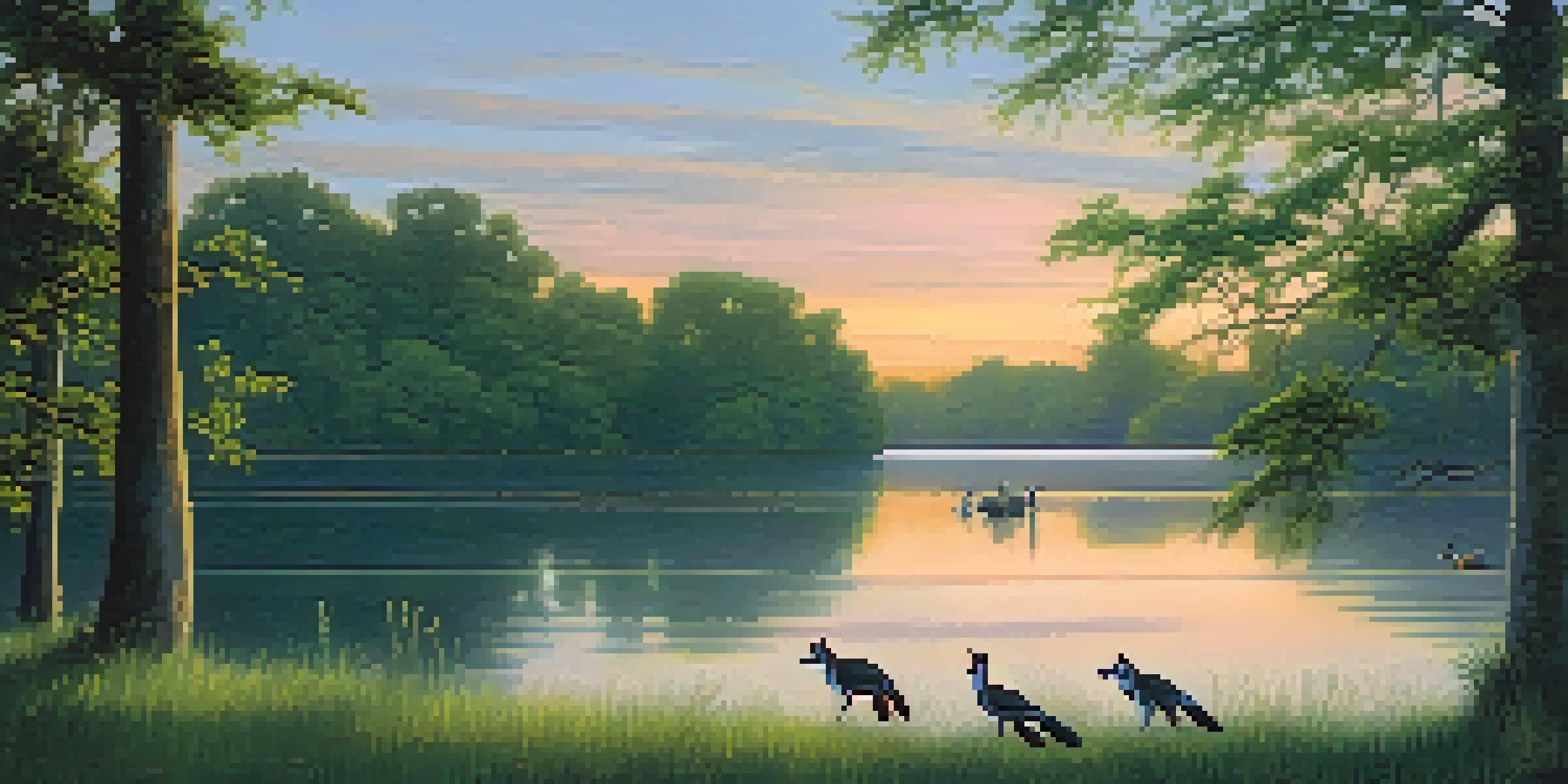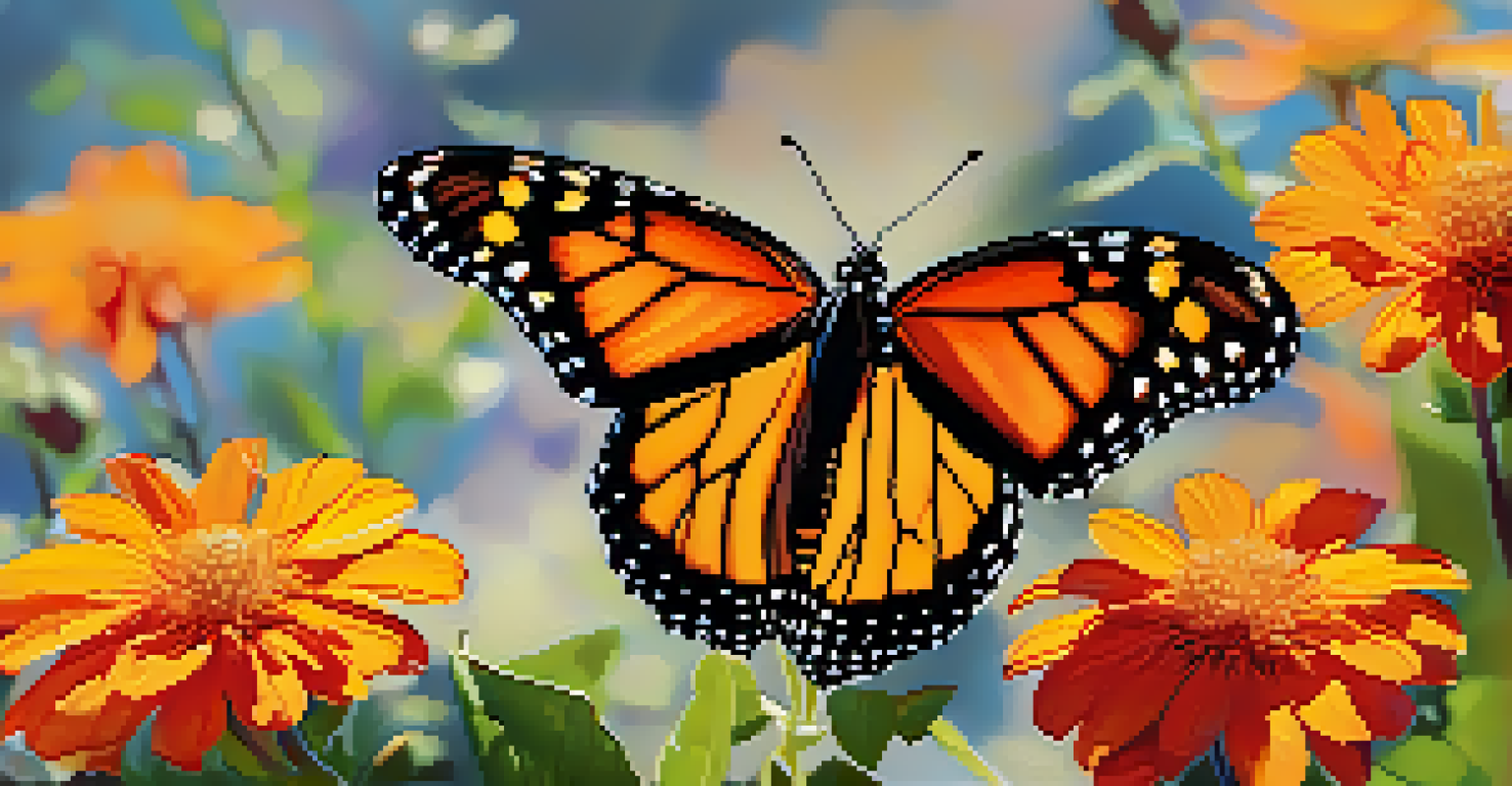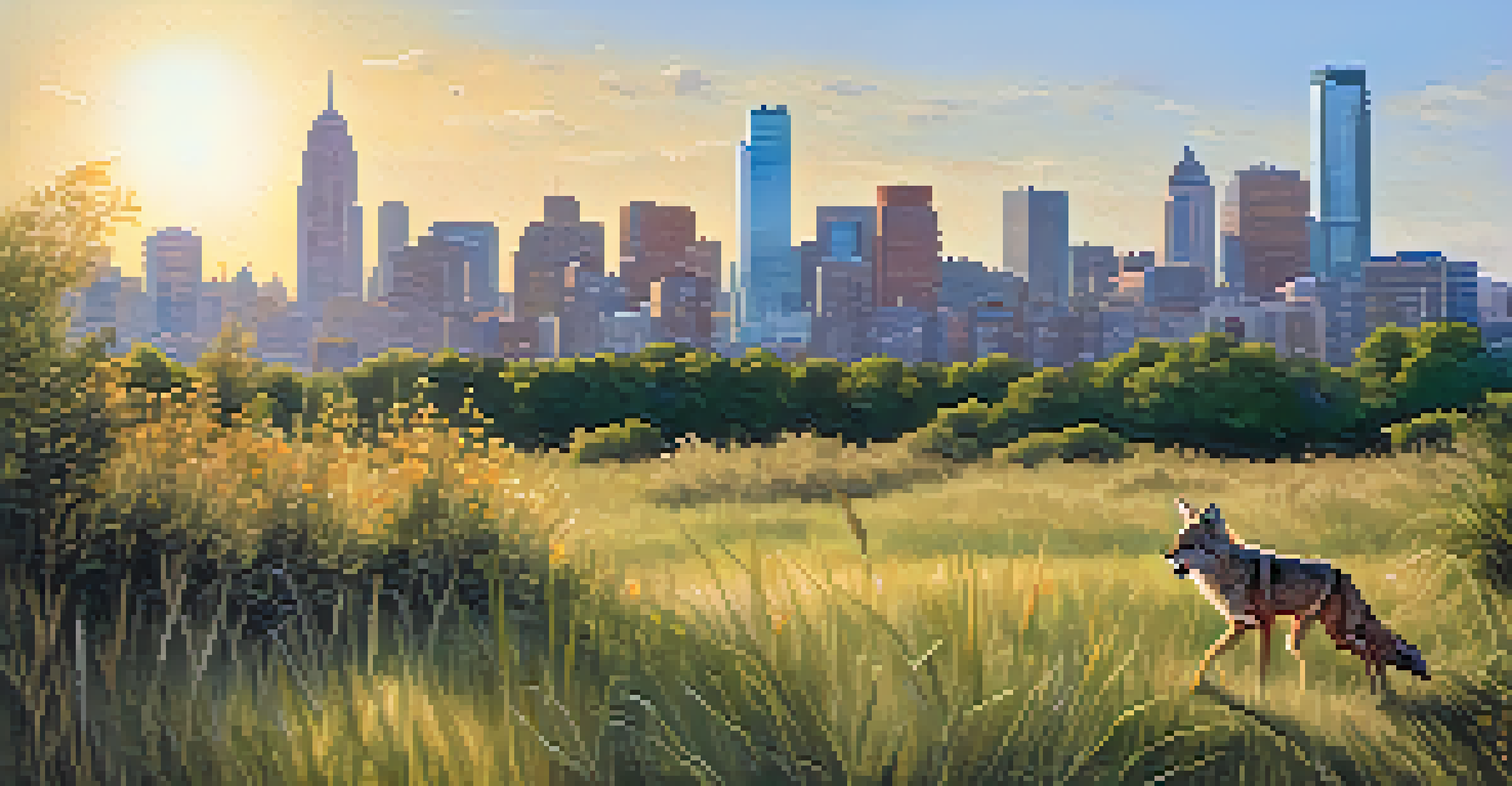Exploring the Diverse Wildlife in Dallas' Urban Parks

Introduction to Dallas' Urban Parks and Wildlife
Dallas is not just a bustling metropolis; it also boasts a variety of urban parks that serve as habitats for diverse wildlife. These green spaces, often overlooked, are crucial for local ecosystems and provide a refuge for many species. From birds to mammals, the wildlife in these parks surprises both residents and visitors alike.
In every walk with nature one receives far more than he seeks.
Urban parks like Klyde Warren Park and White Rock Lake offer unique opportunities to observe nature amid the city's hustle and bustle. Here, you'll find a blend of native wildlife and migratory species, creating a dynamic environment. This article will guide you through the fascinating creatures that call these parks home.
Whether you're a nature enthusiast or just looking for a relaxing day outdoors, exploring the wildlife in Dallas’ urban parks can be a rewarding experience. With a little patience and curiosity, you may spot some incredible animals in their natural habitats.
Birdwatching: A Feathered Delight in the City
Birdwatching in Dallas’ urban parks is a popular activity, attracting both seasoned birders and casual observers. The diverse habitats within these parks support over 300 bird species, making it a birdwatcher's paradise. From colorful songbirds to majestic raptors, every season brings something new to see.

Parks like Trinity River Audubon Center are particularly well-known for their birdwatching opportunities. Here, you can witness the migration of species such as the American Robin and the Great Blue Heron. Bring your binoculars and a field guide to enhance your experience and spot these feathered friends.
Dallas Parks Host Diverse Wildlife
Urban parks in Dallas provide essential habitats for various wildlife, enriching the local ecosystem.
Additionally, participating in local birdwatching groups can elevate your experience. Not only will you learn more about the birds, but you’ll also meet like-minded nature lovers who share your passion for wildlife.
Mammals: The Hidden Residents of Urban Parks
While birds might steal the spotlight, mammals also thrive in Dallas’ urban parks. You might be surprised to learn that animals like raccoons, foxes, and even deer roam these green spaces. These creatures have adapted remarkably well to city life, often venturing out at dusk or dawn.
The environment is where we all meet; where we all have a mutual interest; it is the one thing all of us share.
For instance, if you visit White Rock Lake during early morning hours, you might catch a glimpse of a playful coyote or a family of raccoons scavenging for food. The city's parks provide ample food sources and shelter, allowing these mammals to flourish despite urbanization.
Observing mammals in their natural habitat can be both thrilling and educational. It reminds us of the resilience of wildlife and the importance of preserving these green spaces for future generations.
Reptiles and Amphibians: The Secretive Survivors
Dallas’ urban parks are home to a variety of reptiles and amphibians, each playing a vital role in the ecosystem. From turtles basking in the sun to frogs croaking near ponds, these creatures often go unnoticed by park visitors. Their presence is essential for controlling insect populations and maintaining a balanced environment.
For example, the American Bullfrog is commonly found near water bodies in parks like the Dallas Arboretum. These frogs are not only fascinating to watch but also serve as indicators of a healthy ecosystem. Their calls can often be heard during warmer months, adding a natural soundtrack to your outdoor adventures.
Birdwatching is a Popular Activity
With over 300 bird species, Dallas' parks are a haven for birdwatchers, offering seasonal migrations and unique sightings.
Taking the time to look for these secretive species can enhance your appreciation for urban wildlife. By understanding their roles, we can better advocate for the conservation of their habitats in our city.
Insect Life: The Unsung Heroes of Urban Biodiversity
Insects may be small, but they are the backbone of urban ecosystems. Dallas’ parks are teeming with life, from butterflies and bees to dragonflies and beetles. These insects play crucial roles in pollination and decomposition, supporting the overall health of the environment.
For instance, the Monarch butterfly is a well-known visitor to Dallas parks during its migration. Observing these delicate creatures as they flutter from flower to flower is a delightful experience for park-goers. Many parks also host educational programs to teach visitors about the importance of pollinators.
By embracing the intricate world of insects, we can foster a deeper understanding of biodiversity. Each tiny creature contributes to the larger web of life, reminding us that every species has its place in the ecosystem.
Conservation Efforts: Protecting Urban Wildlife
With the rapid growth of urban areas, conservation efforts have become essential for protecting wildlife in Dallas’ parks. Local organizations and volunteers work tirelessly to maintain habitats and educate the public about the importance of biodiversity. Their initiatives aim to create a balance between urban development and wildlife conservation.
Programs such as tree planting, habitat restoration, and wildlife monitoring contribute to the health of these green spaces. Engaging the community in these efforts fosters a sense of responsibility towards the environment, encouraging everyone to play a part in protecting local wildlife.
Conservation Efforts are Crucial
Local initiatives focus on preserving wildlife habitats in Dallas, highlighting the importance of community involvement in conservation.
As we explore Dallas’ urban parks, it's vital to remember our role in conservation. Supporting local initiatives and respecting wildlife habitats ensures that future generations can enjoy the same vibrant ecosystems we cherish today.
Tips for Wildlife Watching in Urban Parks
If you're eager to explore the wildlife in Dallas’ urban parks, some simple tips can enhance your experience. First, visit during early morning or late afternoon when animals are most active. This is often the best time to observe a variety of species in their natural behaviors.
Second, be patient and quiet. Many animals are skittish and will avoid noise. Use binoculars for a closer look without disturbing them. Bringing a field guide or a mobile app can help you identify the species you encounter, turning your walk into an engaging learning experience.

Finally, respect the wildlife and their habitats. Maintain a safe distance, avoid feeding animals, and stick to marked trails. By practicing responsible wildlife watching, you contribute positively to the preservation of Dallas’ urban ecosystems.
Conclusion: Embracing Nature in the Urban Landscape
Exploring the diverse wildlife in Dallas’ urban parks offers a unique perspective on the natural world. These green spaces not only enhance the quality of life for residents but also provide essential habitats for various species. By taking the time to appreciate and protect these areas, we can foster a deeper connection with nature.
As you venture into these parks, remember that you are part of a larger ecosystem. Every walk through the greenery is an opportunity to witness the beauty of wildlife and contribute to its conservation. The more we engage with our environment, the more we understand our role in preserving it.
So next time you find yourself in one of Dallas' urban parks, take a moment to pause and observe. You never know what incredible wildlife might be just around the corner, waiting to be discovered.